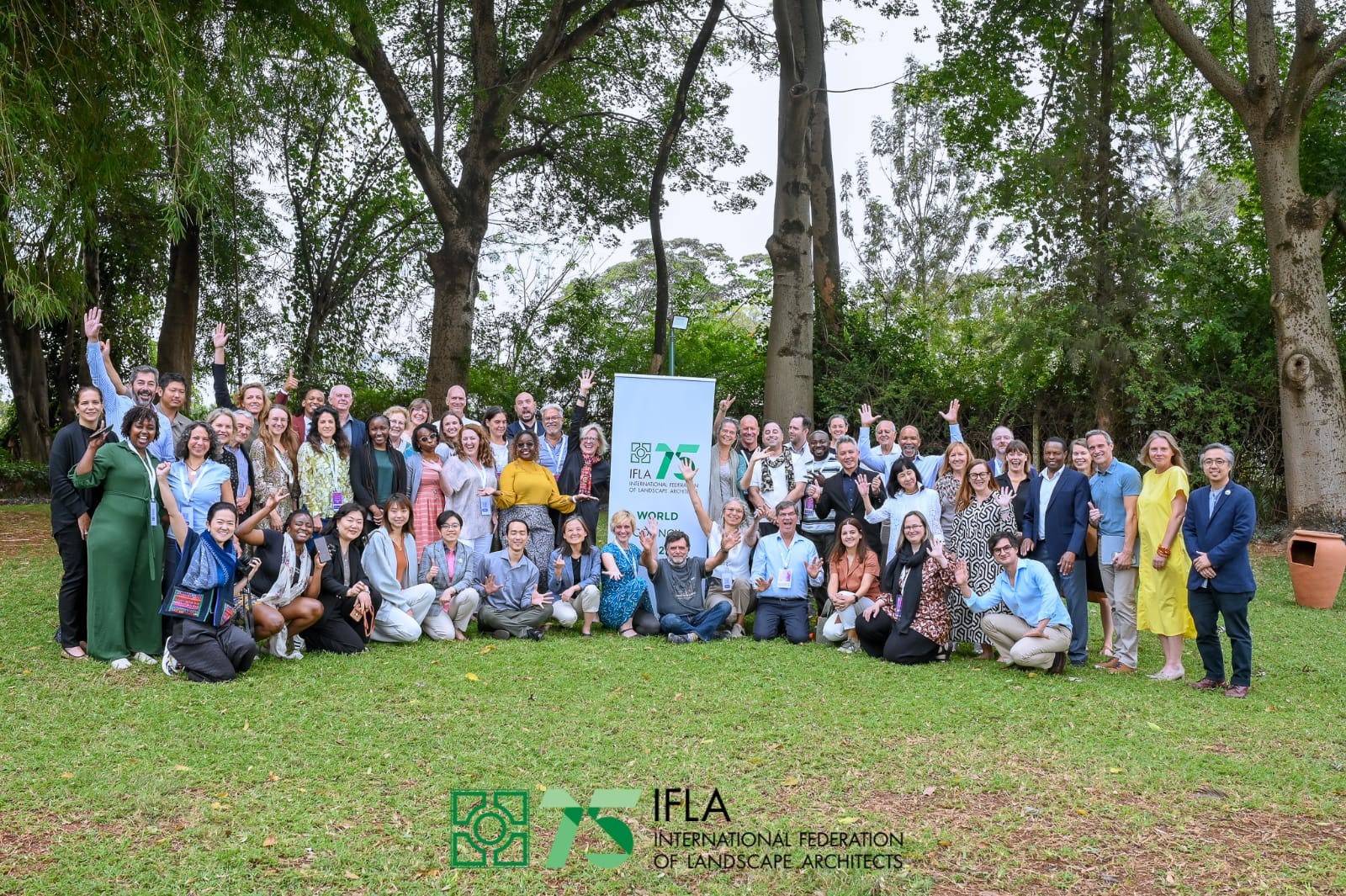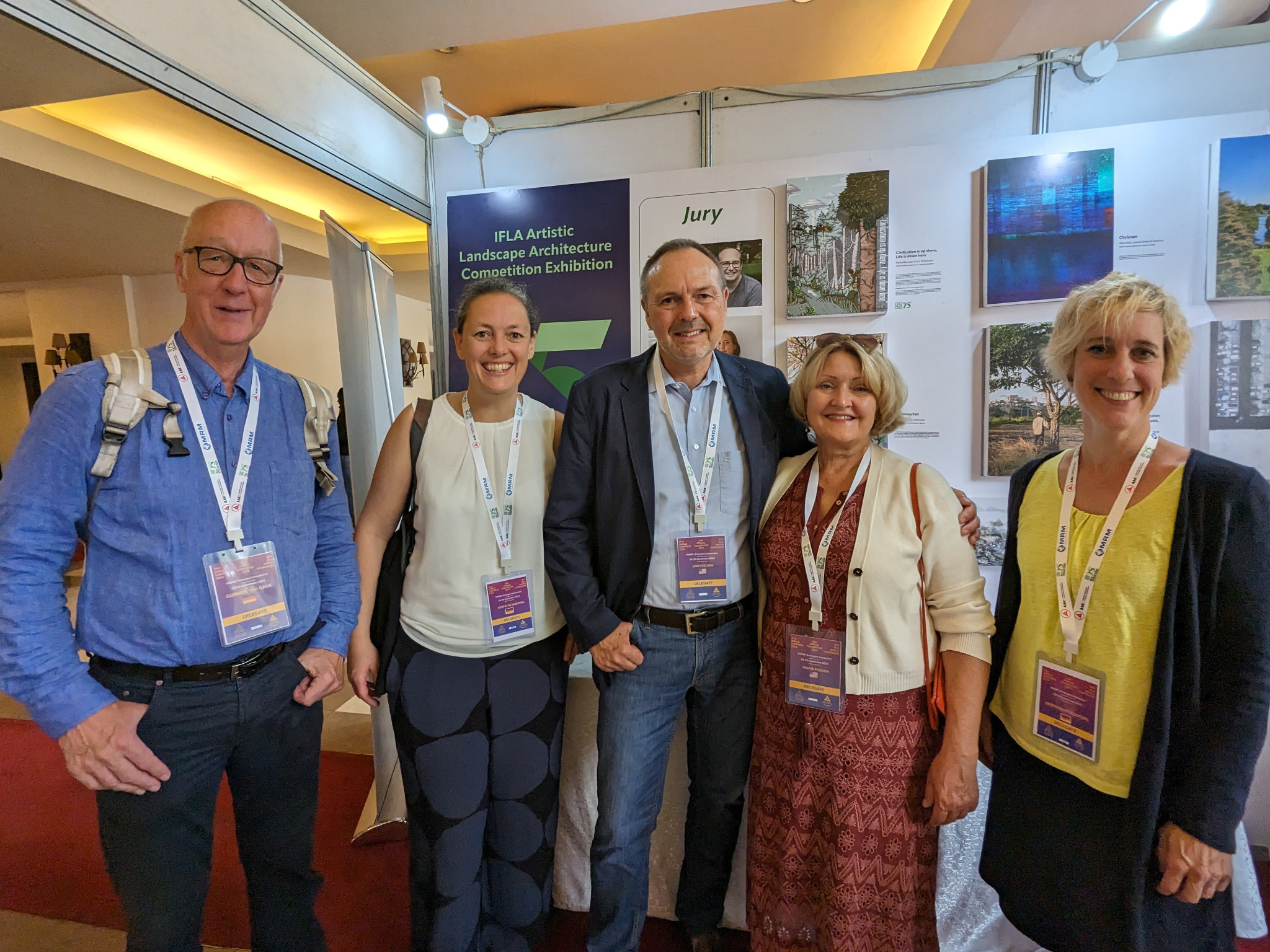Like many good stories, this one is about two strong women who set their minds to something extraordinary: a world congress of landscape architecture on two continents - in Kenya and Sweden - at the same time.
Ruth Wanjiku from Nairobi and Pia Jonsson from Stockholm made it possible. Over 80 nations met from September 28 to 30, 2023, to discuss the current state of landscape architecture across continents.
A report by Gwendolyn Kusters,
delegate landscape architect of the BAK and board member of AKNDS and the bdla regional association of Lower Saxony Bremen

The two have chosen exactly the right year for this unique idea: The IFLA (International Federation of Landscape Architects) is celebrating its 75th birthday in 2023 and has been celebrating this fact since the beginning of the year under the leadership of Steffi Schüppel - the BDLA's international spokesperson - with events and initiatives on a wide range of topics, a new green book on the history and future of the IFLA and landscape architecture worldwide, as well as a grandiose art competition on the "Landscape of the Future".
Five of us traveled to Nairobi and represented Germany with dignity both at the World Congress - Uwe Fischer gave a lecture on the replanting of large trees - and at the preceding IFLA Council meeting from 26-27 September 2023. At both events, it became clear how important it is for our profession to network with UN-Habitat and the International Society of Urban Health (ISUH), for example. UN-Habitat demands that 50% of the area of well-planned cities should be public spaces so that they can act as the "backbone" for social and climate-resilient urban development. This positive effect of blue-green infrastructures on people's health was taken up by the ISUH, which called on us all to become "health practitioners".

German delegation in Nairobi from left to right: Gunnar ter Balk, Steffi Schüppel, Uwe Fischer, Ingrid Fischer, Gwendolyn Kusters
Martí Franch Batllori from EMF landscape architecture in Spain showed us exactly what this "health practitioner" activity could look like in a European context. Sometimes it is enough to change the "software" of public green spaces in order to achieve added value for biodiversity and the quality of life for local people. This refers to well thought-out maintenance concepts for existing green spaces in a city, which can be implemented quickly and cost-effectively with the help of the relevant maintenance crews, so that they are available for the sporting exercise, playful experience or mental relaxation of the people of a city without fear. Of course, this is always in the hope that there will still be some money left over for the "confetti", i.e. for special structural elements such as furniture or play and sports equipment.
In clear contrast to the work of European landscape architecture, the presentation by Prof. Dr. Tunji Adejumo from Nigeria was probably one of the most emotional moments of the congress. In his acceptance speech for the Just Trees Award, he vividly demonstrated that the task of landscape architecture in Africa is to plan productive landscapes. The aim is to secure food production. The creation of parks would only come afterwards.
The next goosebump effect followed immediately after Adejumo's speech: Architect, landscape architect and environmental planner Hitesh Mehta from Kenya had his client from the East African Maasai ethnic group explain how the experience or intelligence of the ancestors - ancestral intelligence (AI) - ensures greater biodiversity and ecological health and thus contributes to better climate resilience.
This brought us back to a topic that united the continents: the participation of local people. This played a crucial role in almost all the contributions, including another important infrastructure topic, the transformation of roads for cars into public street spaces for pedestrians and cyclists. After working my way through the streets of Nairobi on foot, I was particularly impressed by the fact that this issue is also on the agenda in this city. Just like in countries such as Australia, the USA, Poland and China.
Apart from the extensive technical input, there was also a lot of dancing. Kenya taught us that IFLA is not just 4 letters on a piece of paper, but a large community that can be I - F - L - A together. All in the tenor: We want and need to be more visible to the outside world.
- Latitude: 0
- Longitude: 0


